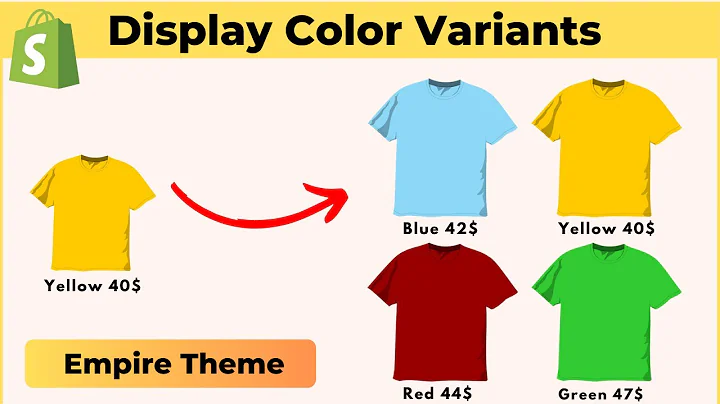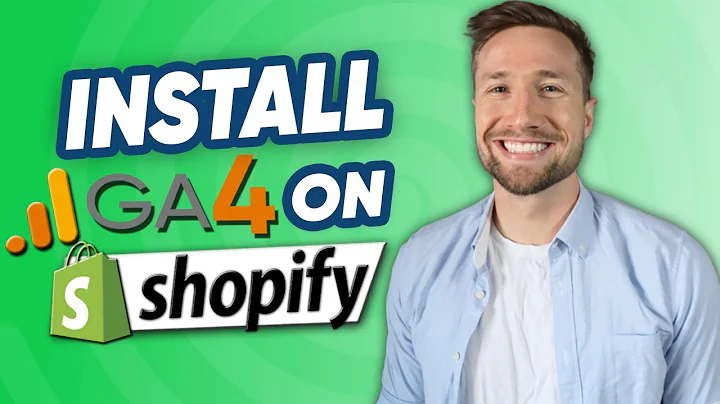Learn How to Dropship on Amazon with Shopify
Table of Contents
- Introduction
- Signing Up with Amazon Seller Central
- Buying Amazon UPC Barcodes
- Adding the Amazon Sales Channel in Shopify
- Setting Up Seller Central Settings
- Creating Listings on Amazon
- Bulk Uploading Products Using Code Isto Linq
- Assigning Barcodes to Products
- Uploading Products into Amazon
- Managing Orders and Sales on Amazon
How to Drop Ship on Amazon with Shopify
Drop shipping is a popular business model that allows entrepreneurs to sell products online without having to carry inventory. One platform that makes drop shipping easy and convenient is Shopify. In this article, we will explore how to drop ship on Amazon using Shopify and discuss the step-by-step process of setting up your Shopify drop shipping business with Amazon.
1. Introduction
In this video, Jorge provides an in-depth tutorial on how to successfully drop ship on Amazon using Shopify. He shares valuable insights on how to get tons of sales every single day and offers a live example of his own successful store on Amazon. The key is to have your Shopify drop shipping business synchronized with Amazon, which Jorge explains in detail.
2. Signing Up with Amazon Seller Central
The first step to drop shipping on Amazon is to sign up with Amazon Seller Central. Jorge explains that the sign-up process is straightforward, requiring basic information such as your password and scan details. Once signed up, you will be presented with two plan options: the individual plan and the professional plan. Jorge recommends starting with the individual plan and upgrading to the professional plan once your sales exceed 40 items per month.
3. Buying Amazon UPC Barcodes
To list your products on Amazon, you will need Amazon UPC barcodes. These barcodes are unique identifiers for each product variant. Jorge suggests a reliable website where you can purchase these barcodes at an affordable price. He assures viewers that he has personally used this website and recommends it based on his positive experience.
4. Adding the Amazon Sales Channel in Shopify
In order to connect your Shopify drop shipping business with Amazon, you need to add the Amazon sales channel in your Shopify backend. Jorge guides viewers on how to locate and add the Amazon sales channel in Shopify. Once added, you will need to set up various seller central settings, including shipping rates, taxes, payments, and category approvals.
5. Setting Up Seller Central Settings
Jorge emphasizes the importance of properly configuring your seller central settings. He advises sellers to set a lead time or processing time of up to five days for order fulfillment. This means that once a sale is made on Amazon, you have five days to apply a tracking code to the order. Jorge breaks down each setting in seller central and provides clear instructions on how to set them up.
6. Creating Listings on Amazon
To list your products on Amazon, you need to create listings for each individual product. Jorge demonstrates how to create listings manually for a few products. However, if you have a large number of products, he recommends using an application called Code Isto Linq. This application allows sellers to bulk upload products to Amazon, saving time and effort.
7. Bulk Uploading Products Using Code Isto Linq
Code Isto Linq is a powerful tool for sellers with a large catalog of products. Jorge explains how to use this application to efficiently import your product information into Amazon. He provides a step-by-step guide on filling out the necessary information, assigning barcodes to the products, and importing the product catalog into Amazon.
8. Assigning Barcodes to Products
Assigning barcodes to each product variant is crucial for successful drop shipping on Amazon. Jorge demonstrates two methods of assigning barcodes: manually assigning barcodes to variants or using the bulk uploading method. He explains the process for both methods and highlights the benefits of bulk uploading for sellers with a large number of products.
9. Uploading Products into Amazon
Once you have assigned barcodes to your products, Jorge shows viewers how to upload the products into Amazon. He walks through the process of exporting product information, creating a CSV file, and uploading the file to Amazon using Code Isto Linq. This method streamlines the product uploading process, especially for sellers with a significant number of products.
10. Managing Orders and Sales on Amazon
Finally, Jorge demonstrates how to manage orders and track sales on Amazon. He provides a walkthrough of the Amazon Seller Central dashboard, showcasing the number of sales made in the past seven days. Jorge explains how to view and manage orders, ensuring smooth order fulfillment and customer satisfaction.
In conclusion, this comprehensive tutorial by Jorge offers valuable insights and practical guidance for drop shipping on Amazon using Shopify. By following the step-by-step process and utilizing tools like Code Isto Linq, sellers can seamlessly integrate their Shopify drop shipping business with Amazon, leading to increased sales and profitability.
Pros:
- Detailed and thorough explanation of the drop shipping process on Amazon
- Clear instructions on setting up Amazon Seller Central and Shopify integration
- Practical tips on managing orders and tracking sales
Cons:
- Limited focus on marketing strategies and driving traffic to your products
- Lack of information on customer service and resolving potential issues
Highlights
- Learn how to drop ship on Amazon using Shopify
- Step-by-step guide on setting up Amazon Seller Central
- Buying Amazon UPC barcodes for product listings
- Adding the Amazon sales channel in Shopify
- Setting up seller central settings for smooth operations
- Creating and managing listings on Amazon
- Efficient bulk uploading of products using Code Isto Linq
- Assigning barcodes to each product variant
- Uploading products into Amazon for sale
- Managing orders and tracking sales on Amazon
FAQ
Q: Can I start drop shipping on Amazon without a professional plan?
A: Yes, you can start with the individual plan and upgrade as you sell more than 40 items per month.
Q: Is it necessary to buy Amazon UPC barcodes?
A: Yes, barcodes are required for each product variant you want to list on Amazon.
Q: Can I manually create listings for all my products?
A: Yes, you can manually create listings, but it is time-consuming, especially for a large number of products. Using an application like Code Isto Linq can simplify the process.
Q: How do I assign barcodes to my products?
A: You can either manually assign barcodes to each variant or use bulk uploading methods with applications like Code Isto Linq.
Q: How can I track my sales and manage orders on Amazon?
A: Amazon Seller Central provides a dashboard where you can view and manage orders, track sales, and ensure timely fulfillment.
Q: What happens if I don't apply a tracking code within the specified lead time?
A: It is important to apply a tracking code within the lead time provided by Amazon to maintain a good seller rating.
Q: Are there any additional costs involved in drop shipping on Amazon with Shopify?
A: Apart from the recurring fees for the professional plan on Amazon Seller Central, you may have to invest in marketing and advertising to drive traffic to your products.






















